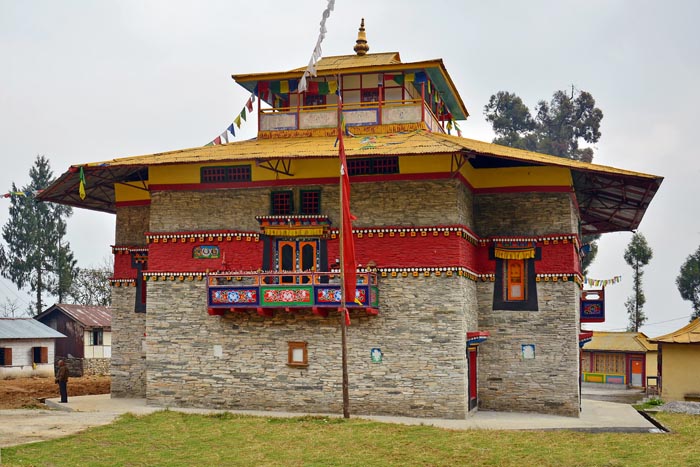Labrang Monastery

Detail of Labrang Monastery (Sikkim) History & Architecture
The Labrang Monastery is undoubtedly one of the most visited monasteries of Sikkim. Labrang Monastery is in the northern part of the state of Sikkim and thereby is just 2 km away from another famous monastery which is the Phodong. The word "Labrang" literally means "The Lamas Dwelling". The Labrang Monastery actually belongs to the Nyingmapa sect of Buddhism which makes it different from the other monasteries in Sikkim. The other fact about the Labrang Monastery which differentiates it from the other monasteries in Sikkim is that even today it is maintained in the original state, which is indeed unlike the other Monasteries in Sikkim.
The Labrang Monastery is surrounded by dense forests. That is to its north-south and west the monastery is entirely surrounded with forests, which adds on to the attraction of the monastery. People visit the Labrang Monastery as they can visit two other good tourist attractions at the same time which are the Phodong Monastery and the Tumlong ruins.
If you are one of those who love meditating in a serene environment then Labrang Monastery is definitely the place to be.
Labrang Monastery Mythology & History
The Labrang Monastery is no doubt a very old monastery as it was built in the 18th century. To be exact it was built in the year 1814 by Gyalshe Rigzing Chempa, who thereby took that initiative to build this architectural model by staying in the Palace which was especially built for him to stay while the Labrang Monastery was being constructed. The name of the Palace was Wangdiche.
The main motive behind the construction of the Labrang Monastery is that it was built to commemorate the Konguan (Tibetan) Latsun Chembo. You would be fascinated to know that it was Latsun Chembo who actually made the Nyingmapa School of Tibetan Buddhism.
Labrang Monastery Architecture
The Labrang Monastery resembles the Sikkim style of architecture but with an edge as the first look of the monastery itself will make you able to differentiate that edge over the other monasteries of Sikkim. The architecture of Labrang Monastery is called "Rinchhen Surgye" which depicts a structure of eight pointed diamonds. And these eight pointed diamonds encode and symbolize the indestructability of the monastery and thereby make the Labrang Monastery one of its kinds. The best part about the architecture of the Labrang Monastery is that it is still intact and is maintained in its original state.
If we come to the architectural structure of the monastery it is very distinguishing as the way the Sikkim style canopies decorate the monastery from above is just amazing and antique in its own way. One of the main attractions of the Labrang Monastery is the Karma Guru Statue which is the statue of the Lord Guru. The statue exposes the wrath of the Lord Guru and is situated on the first floor and installed in a shrine.
A major change has been brought by the government in the year 1978. The change included decorating the walls with life like frescoes which belonged to the Buddhist legends.
Festivals at Labrang Monastery
The Labrang Monastery celebrates almost all the Buddhist festivals in a very celebrated manner. So you can opt to visit the monastery at any point of time in the year. However, if you want to be on an exact festival period then you can go through the Tibetan Calendar and spot any good festival and be here.
The Masked dance is what people look forward to, in the festivals held here. So grab your dancing shoes and join the Monks in the masked dance and have a never before experience in Labrang Monastery!